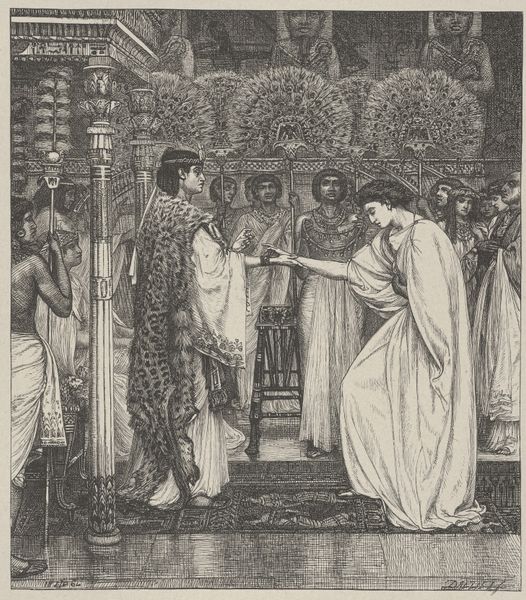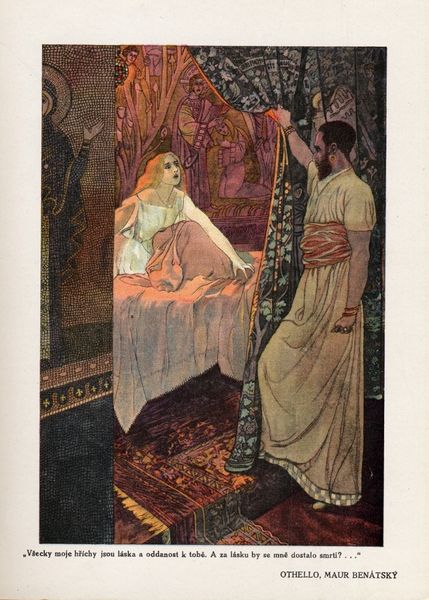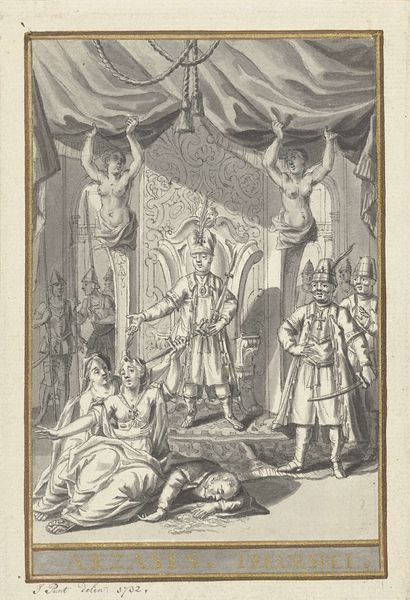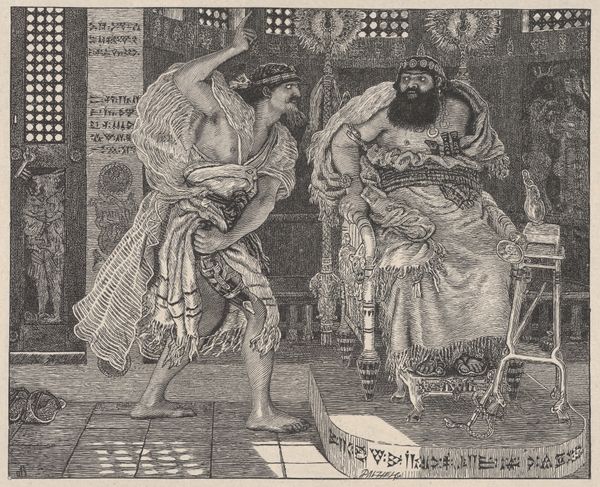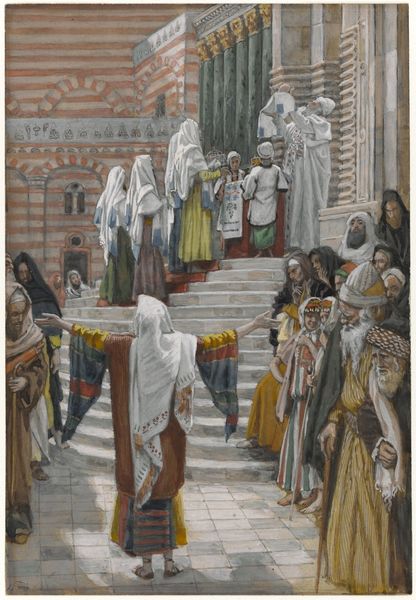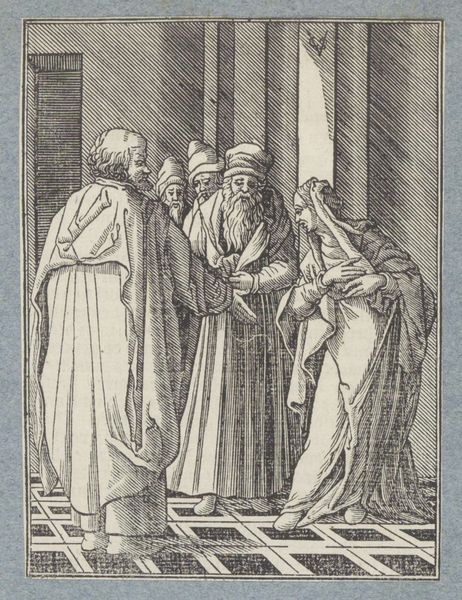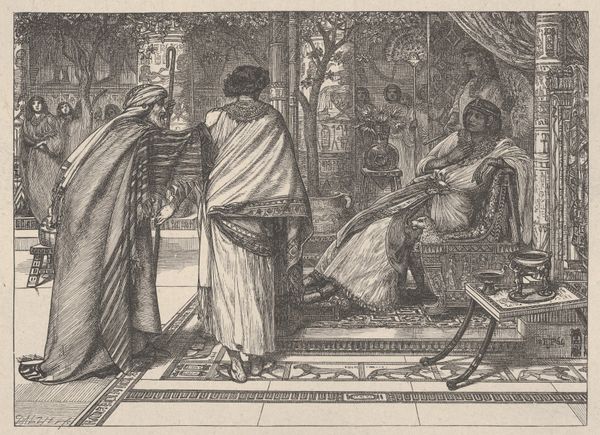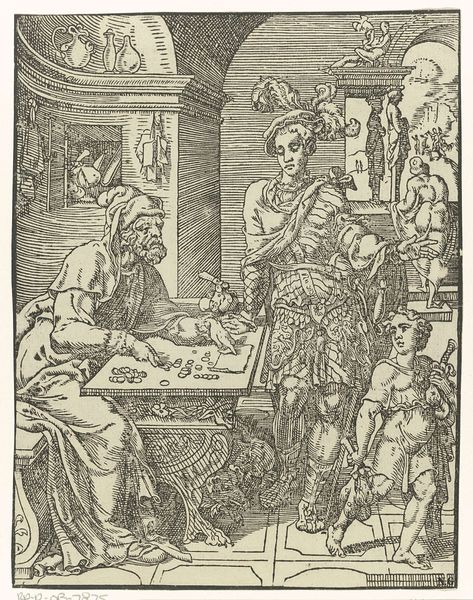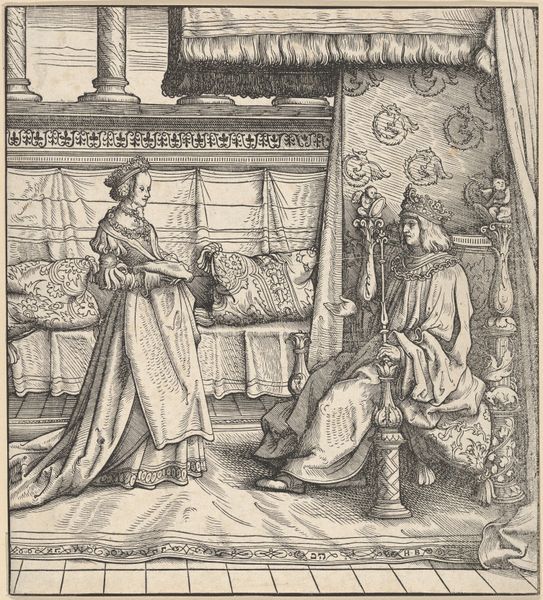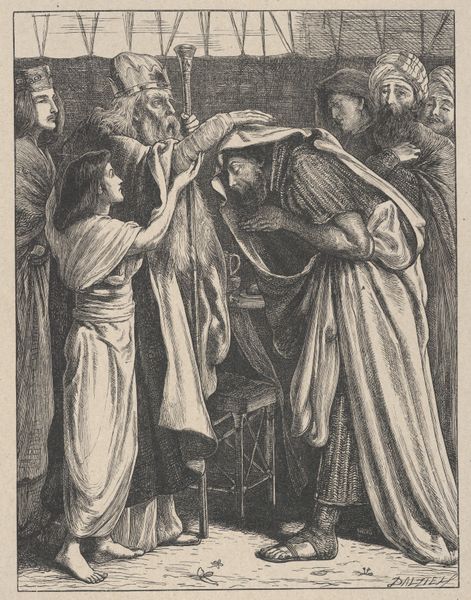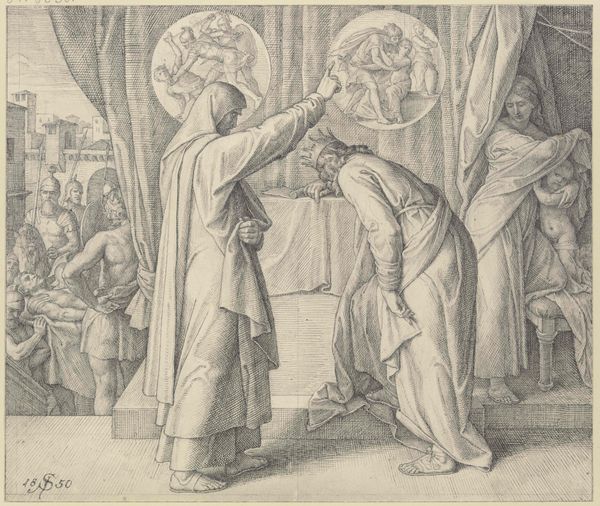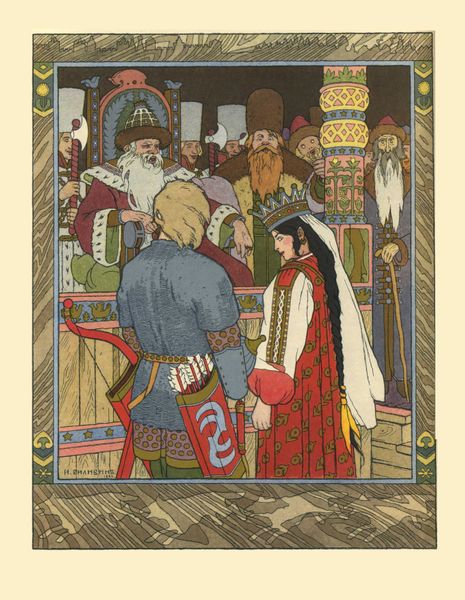
tempera
#
narrative-art
#
tempera
#
pattern
#
pattern background
#
ethnic pattern
#
orientalism
#
islamic-art
#
genre-painting
Copyright: Public domain
Curator: This tempera illustration, signed by Ivan Bilibin, evokes a specific kind of storybook exoticism. It's believed to be an illustration for the fairytale "Magic Carpet." The level of decorative detail is intense. Editor: Yes, my first thought is about the overwhelming ornamentation, it almost verges on claustrophobia. Look at all the patterned textiles! How would you describe the artist’s deployment of these motifs, from a formal perspective? Curator: The density serves as more than mere decoration; it dictates the composition itself. Consider how Bilibin frames the scene. The artist flattens the perspective, almost collapsing the foreground, middle ground, and background through these layers of geometric patterns. Each article in the illustration, including those on the background, is teeming with visual motifs. What kind of world is evoked for you? Editor: A world where meaning is meticulously inscribed onto every surface. Each arabesque and geometric shape must carry some coded significance. Take for instance the elephant depicted on one of the plates—it likely signals power, memory, royalty, and perhaps even a connection to the Hindu god Ganesha. Everything hints at something beyond the immediately visible, wouldn't you say? Curator: It is a system where every element adheres to pre-existing structures. These characters do not exist separate from their surroundings, but entirely because of them. They are integrated parts within this formal scheme of interlocking shapes, almost like cogs within some vast machine. Editor: I wonder if we might see it also as an embodiment of cultural memory? These symbols would be instantly legible to a particular audience, communicating shared values and narratives with immediate emotional resonance. And also notice how the pattern in the background has animals arranged throughout it too, that may reflect some indigenous meaning and values from its local region. Curator: Possibly. What strikes me, though, is less the semantic value and more how these patterns function almost as a kind of camouflage. There’s no sense of empty space, creating an environment of constant visual stimulation. It does, as you observed, conjure a claustrophobic affect. Editor: And the figure studying the carpet in the center - he could very well be unaware of its 'magic', he looks at it, feels the fiber, but the actual meaning behind it is lost on him in this frame, almost tragically. Curator: An intriguing consideration indeed. This intense focus on internal relationships gives Bilibin's image its unique aesthetic charge. Editor: Precisely, and analyzing its potent imagery helps us tap into enduring cultural narratives embedded in these symbols.
Comments
No comments
Be the first to comment and join the conversation on the ultimate creative platform.
